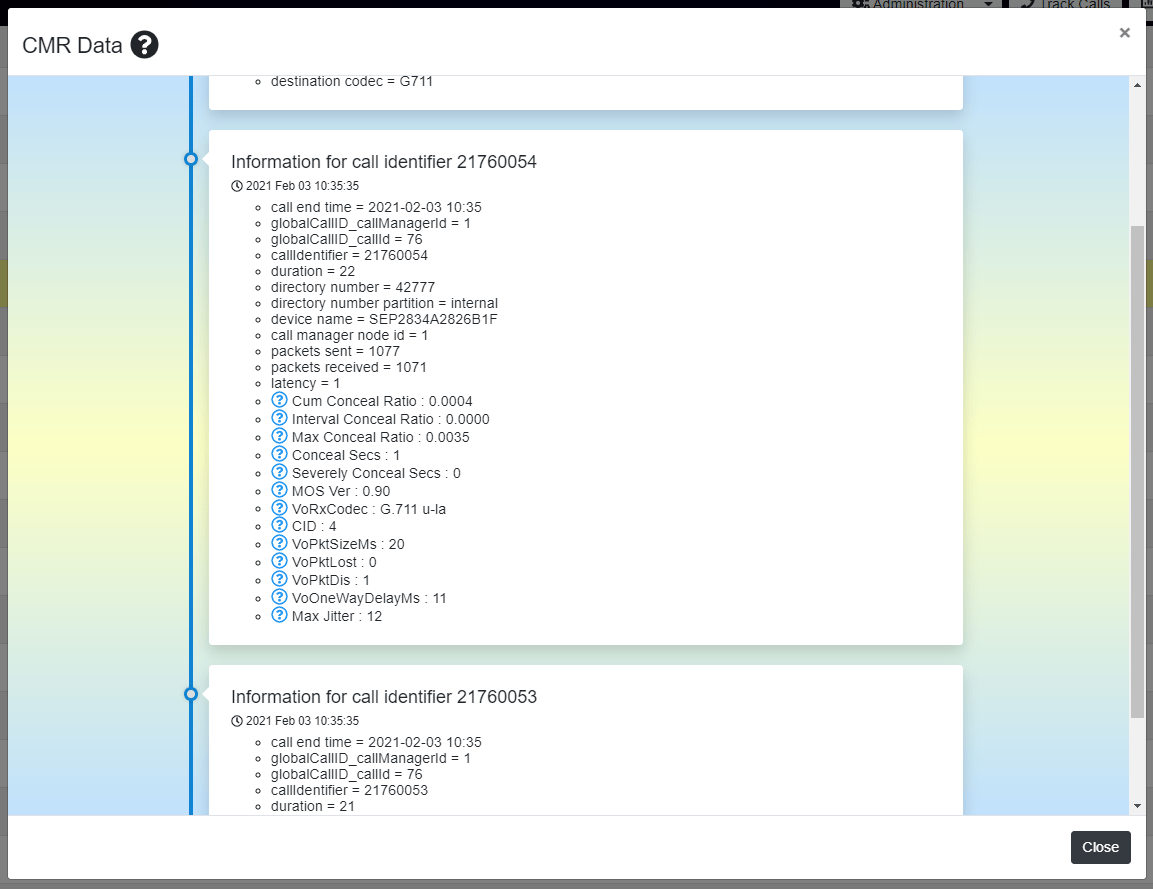Cisco CUCM produces CDR files (Call Data Records) as well as CMR (Call Management Records). In this article, we’ll look the CMR files, and the data contained inside.
VoIP Detective is able to read these CMR files, and produce CMR data that is easily viewable in the admin report:
As you can see, there are quite a few technical details there. The following definitions should help us make sense of them.
| Field | As Shown in VoIP Detective | Description |
|---|---|---|
| CCR | Cumulative Conceal Ratio | Cumulative Conceal Ratio represents the cumulative ratio of concealment time over speech time that is observed after starting a call |
| ICR | Interval Conceal Ratio | Interval Conceal Ratio represents an interval-based average concealment rate that is the ratio of concealment time over speech time for the last 3 seconds of active speech |
| ICRmx | Max Conceal Ratio | Interval Conceal Ratio Max represents the maximum concealment ratio that is observed during the call |
| CS | Conceal Sec | Conceal Secs represents the time during which some concealment is observed during a call |
| SCS | Severely Conceal Secs | Severely Conceal Secs represents the time during which a significant amount of concealment is observed |
| MLQK | MOS LQK | MOS Listening Quality K-factor provides an estimate of the MOS score of the last 8 seconds of speech on the reception signal path |
| MLQKmn | MOS Listening Quality K-factor Min ICRmx | MOS Listening Quality K-factor Min represents the minimum score that is observed since the beginning of a call and represents the worst sounding 8-second interval |
| MLQKmx | Max MOS LQK | MOS Listening Quality K-factor Max represents the maximum score that is observed since the beginning of a call and represents the best sounding 8-second interval |
| MLQKav | MOS Listening Quality K-factor | MOS Listening Quality K-factor Avg represents the running average of scores that are observed since the beginning of a call |

